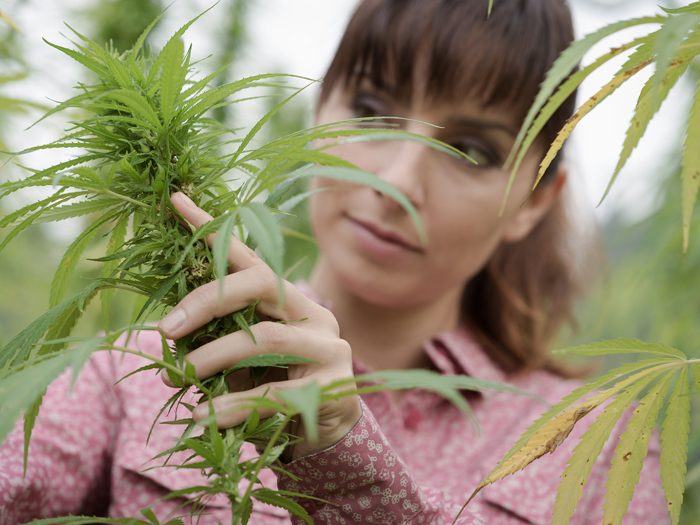Cannabis Industry
Grow Operations Coming to Terms With Risk

As the legal cannabis industry matures, its crop producers and retail shops are increasingly adopting risk management practices that include greater attention to worker safety.
The expanding size and sophistication of grow operations, greater scrutiny from regulatory agencies, crime, potential labor union involvement, and even workforce-retention concerns, are rapidly driving adoption of safety practices ignored when mom-and-pop size operations dominated.
“I see it happening very quickly,” said Justin S. Moriconi, an attorney at Segal McCambridge Singer & Mahoney who advises marijuana industry clients.
“I have seen a huge uptick in standard operating procedures to deal with issues, such as how much weight one [marijuana grow operation] worker can move at one time.”
The shift is driven in part by the industry’s rapid evolution, as more states allow recreational and medicinal marijuana production and sales.
In some East Coast states, for example, there are only a few legal grow operations, but they are very large, requiring millions of dollars in investment. It’s also a business model increasingly driven by players with multi-state operations.
While such operations don’t typically hire someone with a risk management title, like larger corporations might, they are paying greater attention to insurance purchasing and risk mitigation practices than the smaller operations that dominated the early years of legal cultivation limited to California, Moriconi said.
“When you are dealing with that level of money investment, certainly you are going to be much more attuned to risk management … and making sure everything is going as planned,” he said. “I am seeing a lot of that.”
On the West Coast, Moriconi is witnessing changes as he tours expanding cannabis operations.
A year ago, he toured a grow facility with the walls and floor painted white to boost light reflection that can improve plant yield and thus, the bottom line.
But the paint made for a slippery floor surface for workers tending plants.
“They had done that, not thinking about the production workers walking around this grow operation picking all the dead leaves off, watering the plants, and doing all the things that need to be done to cultivate this product and they were slipping occasionally,” Moriconi said.
During a more recent visit to the same facility Moiconi noticed a slip-resistant floor had been installed, although the slip resistant material remained white.
Jennifer Martin, a cultivation consultant at marijuanapropagation.com, said ergonomics are a key topic she speaks on before industry groups because at many commercial cultivation sites she sees plants on the ground. That forces workers to constantly bend down.
She advises raising the plants on stands to eliminate strained backs while increasing worker productivity.
“Even among younger workers I am seeing knee and back problems from them doing it that way,” Martin said. “So that is the first thing I say when I go in. Not only so the workers won’t be stressed, but so they can do a better job growing the plants because you can see them better when you are looking across [plants] instead of down at them.”
Other risks that grow operation workers face include exposure to chemicals and intense, hot lighting systems.
“Once the unions get involved in this you will have no shortage of claims.” — Justin S. Moriconi, attorney, Segal McCambridge Singer & Mahoney
One emerging workers’ comp risk involves the long hours workers spend hand-trimming leaf matter away from the valuable cannabis buds, several sources said. It is typically a manual job with a potential for repetitive-stress injuries and lacerations.
“I know we have had claims associated with that,” said Jim McMillen, director of safety services at Pinnacol Assurance, a Denver-based insurer of Colorado workers’ comp risks. “Probably the most severe claim we have had with that type operation was an amputation — a finger.”
Unions Stepping In
The spectrum of sophistication among operations means some growers remain primarily focused on the basic task of product production without considering worker safety.
But as more grow operations evolve from bachelor-pad like environments to sophisticated concerns, said Martin, she is seeing greater attention paid to ergonomics and worker comfort.
Risk-mitigation efforts she sees include helping workers with posture, enforcing rest breaks, and hiring masseuses to ease shoulder and wrist strains.
Greater scrutiny from OSHA, state agricultural agencies and state marijuana control boards are helping drive the improvements, Martin said. Like employers in other industries, cannabis operations also adopt safety measures to eliminate employee turnover and retain valuable workers, she added.
Labor union pressures could also drive worker safety improvements. Notably, the 33,000-member United Food and Commercial Workers International Union is recruiting medical marijuana workers under a “Cannabis Workers Rising” program.
Moriconi expects to see the union active in Eastern states, such as Pennsylvania, which are adopting medical marijuana laws and already have an extensive organized labor presence.
In smaller mom-and-pop operations, younger workers may have accepted cash or product as wages and are not likely to report an injury claim, Moriconi said. But that will change.
“Once the unions get involved in this you will have no shortage of claims,” Moriconi said. “They are not going to take product. You will be dealing with different checks and balances to make sure you have the safety and risk management built in.”
The recent murder of a security guard at a Colorado marijuana shop, meanwhile, added to criticisms that increasing retail outlet security measures often focus on protecting the cash-only businesses’ cannabis product and money rather than workers.
But overall, the risks faced by cannabis retail shops generally mirror those experienced at other retail stores with an elevated exposure profile, sources said.
McMillen at Pinnacol likened the risk level to other businesses interacting with the public and handling cash, like liquor stores or taxi cabs.
The approximately 200 marijuana retail dispensaries insured by California State Compensation Insurance Fund report injuries consistent with other businesses classified as retail operations, a SCIF spokeswoman said.
“It was primarily slips, trips and falls,” she said. “In terms of the injuries, it was strains and sprains.”










